
Home
Mission
Overview of Project
Project Staff
Sponsors
Achievements
Checking, Illustrations
Upcoming Activities
Id and Species Lists
Protea Information
Protea Gallery
Growing Proteas
Interim Dist. Maps
Publications
Afrikaanse Inligting
![]()
More new photographs of Climax Conebush - 'Leucadendron climacticum'
12 November, 2001
The site of the newly discovered Climax Conebush - 'Leucadendron climacticum', was last visited by the Protea Atlas Project on 16 October 2001 (see New Photographs of Climax Conebush - 'Leucadendron climacticum'). Based on the October visit, Dr Tony Rebelo, the Protea Atlas Project's scientific officer reckoned that it would flower within the next 2 to 3 weeks. Hence, the trip on 12 November 2001.
The Proteaceae taxonomist, Dr John Rourke of the Compton Herbarium, Dr Colin Paterson-Jones argueably South Africa's premier photographer of the Proteaceae in South Africa (see Colin Paterson-Jones - Nature Photographer and Writer), Tony Rebelo, Félix Forest and I set off to visit the new Leucadendron. We fully expected to see it in full flower and thus perhaps be the first people to ever see this plant flowering (?).
So, what happened?
It was indeed in full flower. Have a look at the photographs.
Nigel Forshaw
PS. And what is John Rourke going to call the new Lecuadendron? We will have to wait for the publication of the species description in Bothalia, scheduled for October 2002.
John Rourke and Tony Rebelo looking at a female 'Leucadendron climacticum'
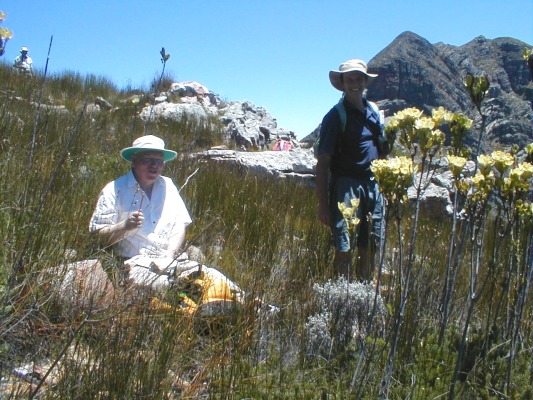
Here John Rourke is wagging his pencil after seeing for himself the "most outrageous" habit of the new Leucadendron. The term "outrageous" was used because of the very strange growth habit of the plant where it produces many leaves at the base of the stem for a few years and does nothing much else but eventually the plant takes off, produces long reproductive stems very quickly and then slows its growth down rapidly. There is no other Leucadendron which shows such a habit.
The newly discovered and collected 'Leucadendron climacticum' safely wrapped for the journey back to Cape Town
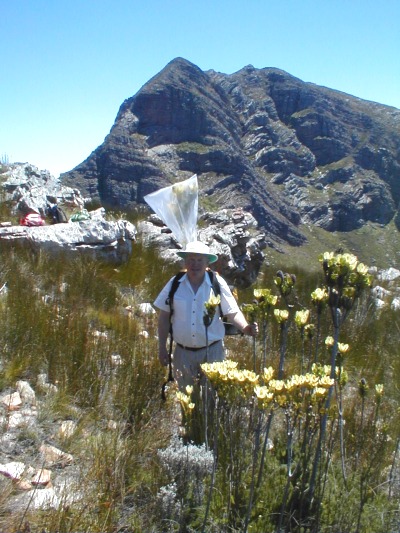
Three herbarium specimens of each sex were collected. One pair will go to the Compton Herbarium, another to the Pretoria Herbarium and one to Kew, London.
The female 'Leucadendron climacticum'
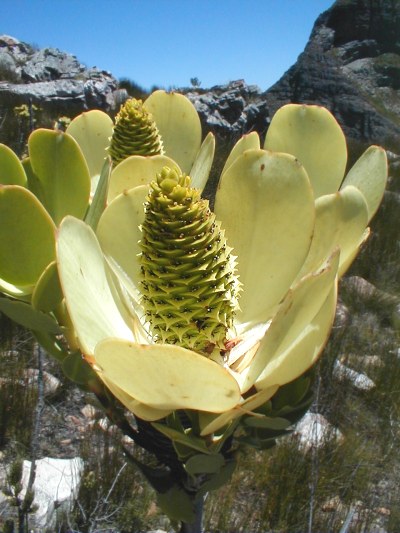
The male 'Leucadendron climacticum'
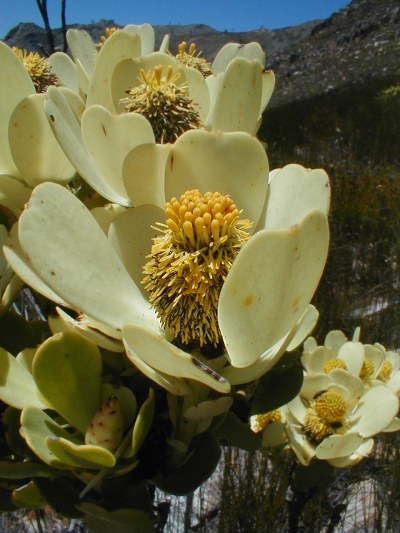
Green flies and small beetles are very interested in 'Leucadendron climacticum'...
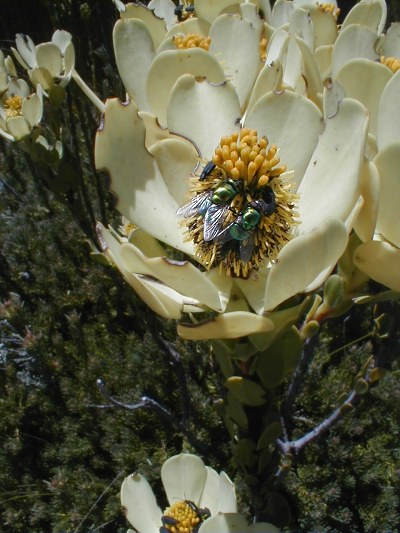
And so too are Scarab Beetles
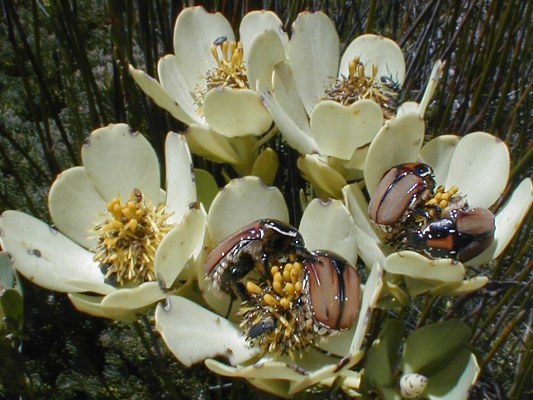
Green Flies, Small Beetles, Scarab Beetles and Butterflies were seen visiting 'Leucadendron climacticum', all of which are highly likely to be pollinators of this species. Have a look at information on pollinators and pictures of pollinators.
Involucral bracts dropping off the female 'Leucadendron climacticum'
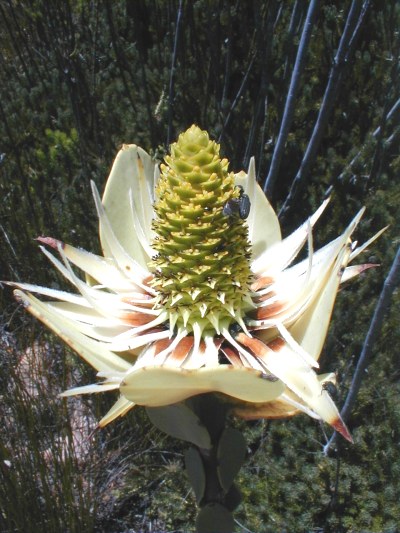
Involucral bracts dropping off the male 'Leucadendron climacticum'
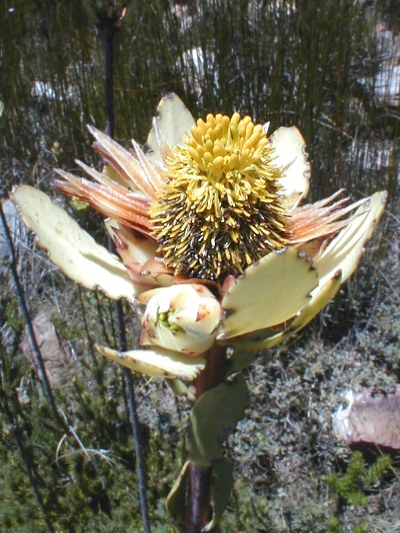
A very interesting feature of 'Leucadendron climacticum' is that the involucral bracts drop off the cones. No other species of Leucadendron shows this character. This fact is therefore useful for identifying purposes.
Have a look at New Photographs of Climax Conebush - 'Leucadendron climacticum', More about the newly discovered Conebush, Climax Conebush' and New Conebush Discovered by Atlassers which document the discovery of this new species from March 2001 until October 2001.
Nigel Forshaw
Back Protea Atlas Project